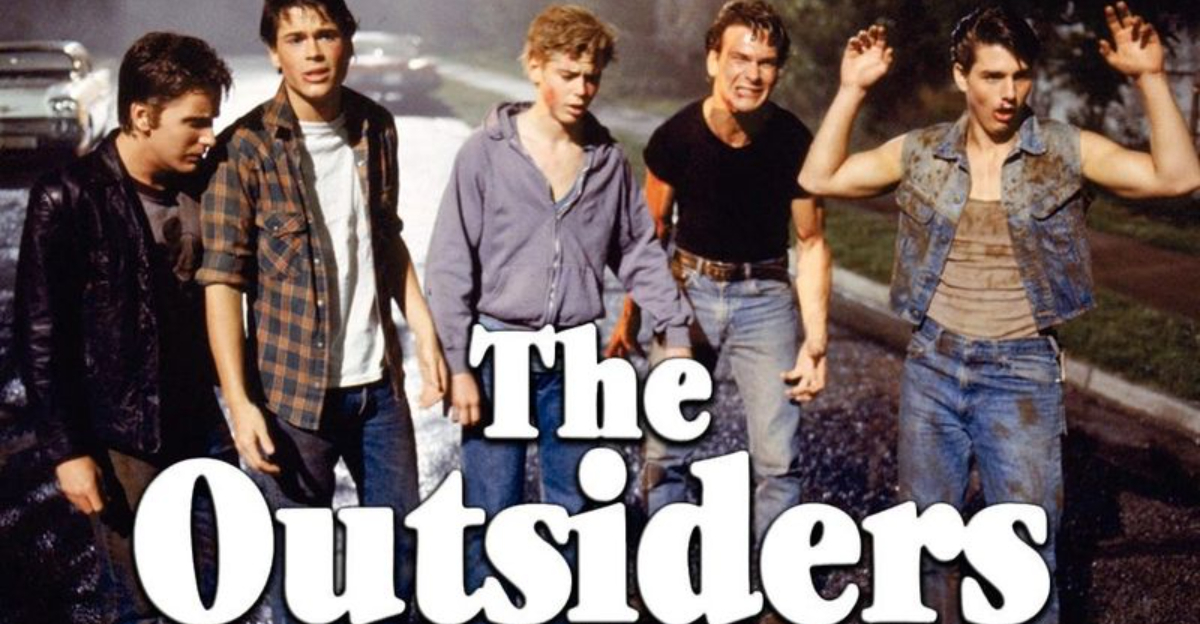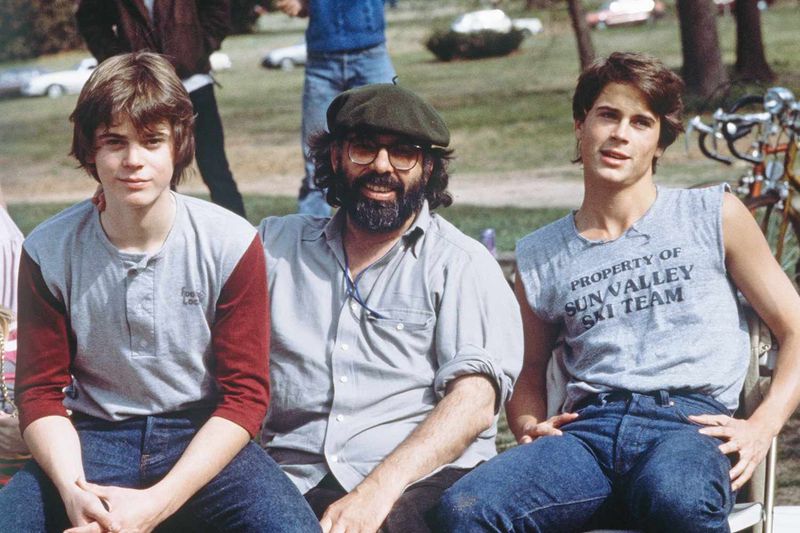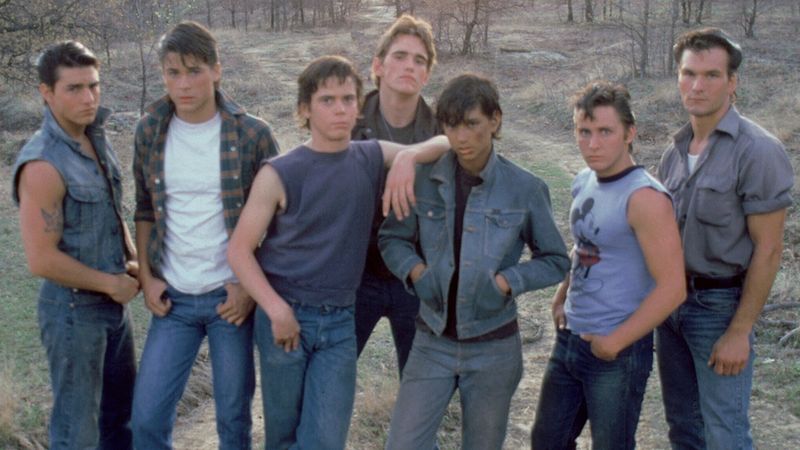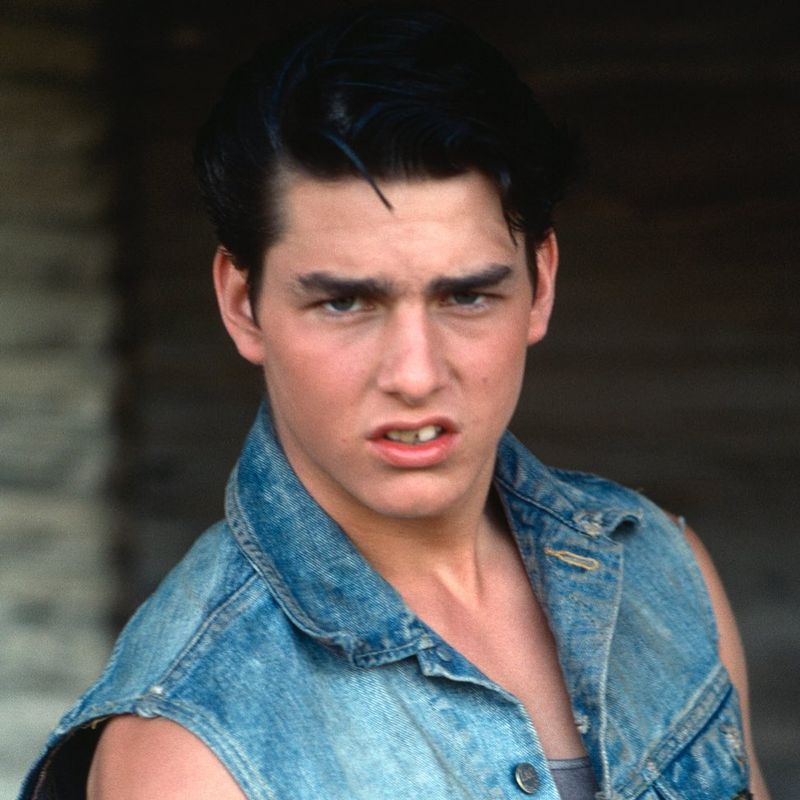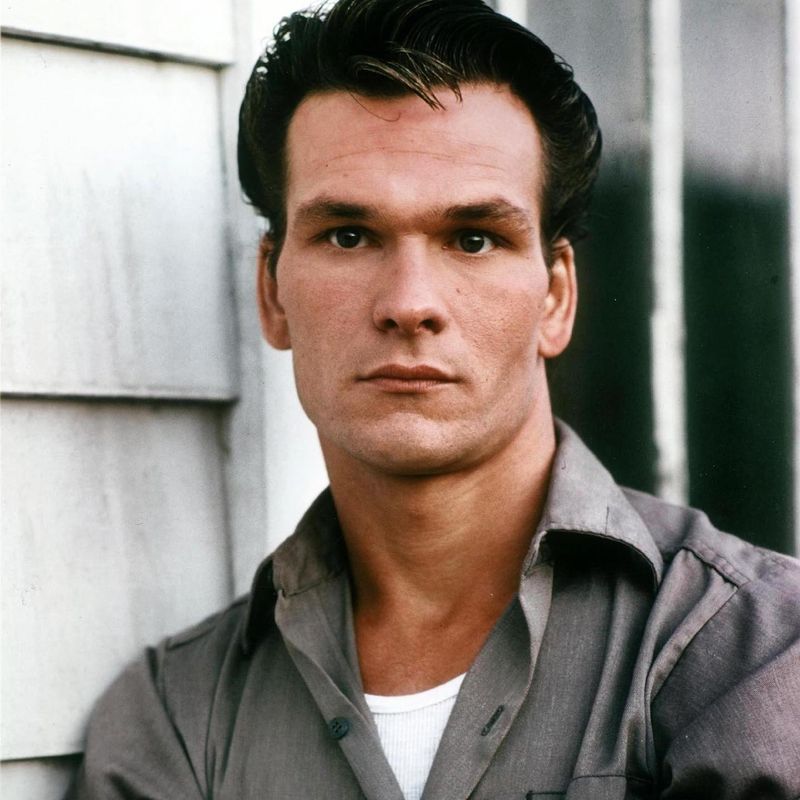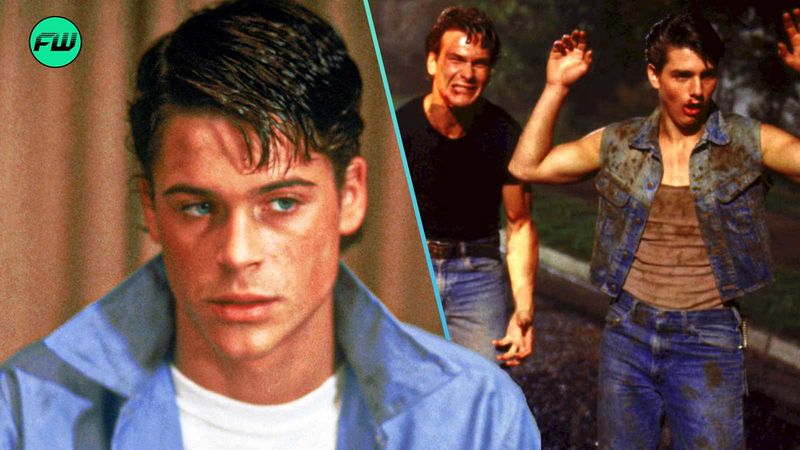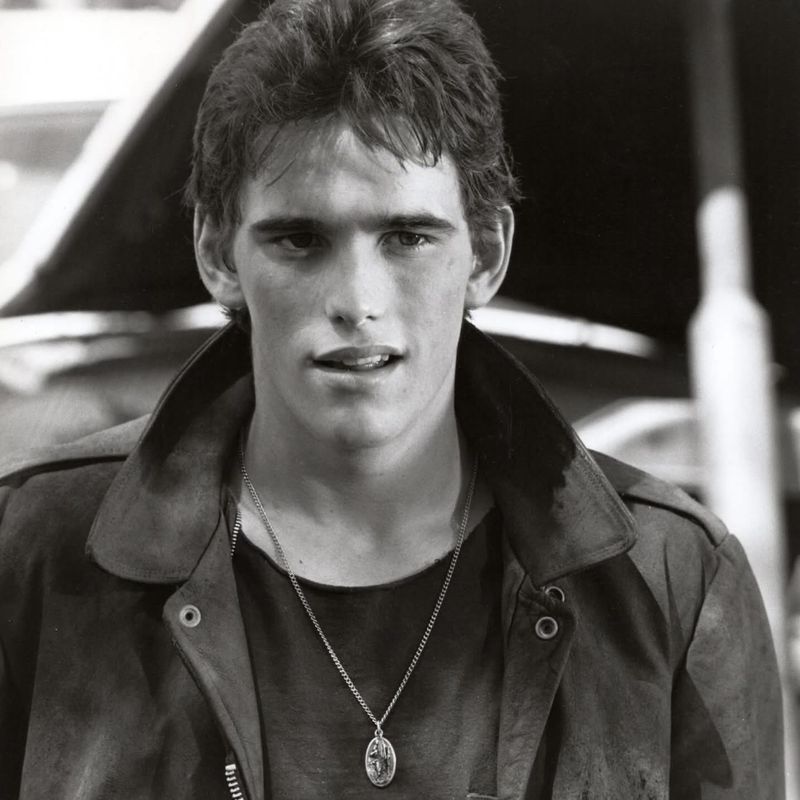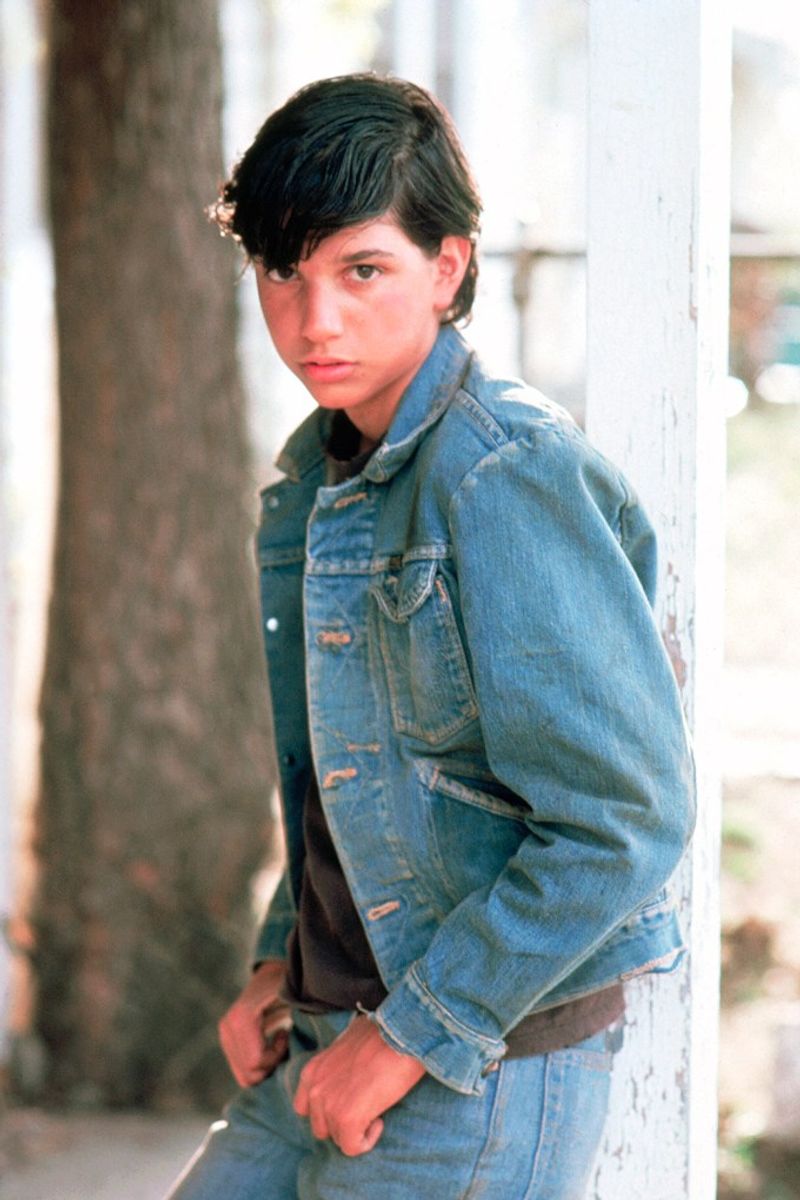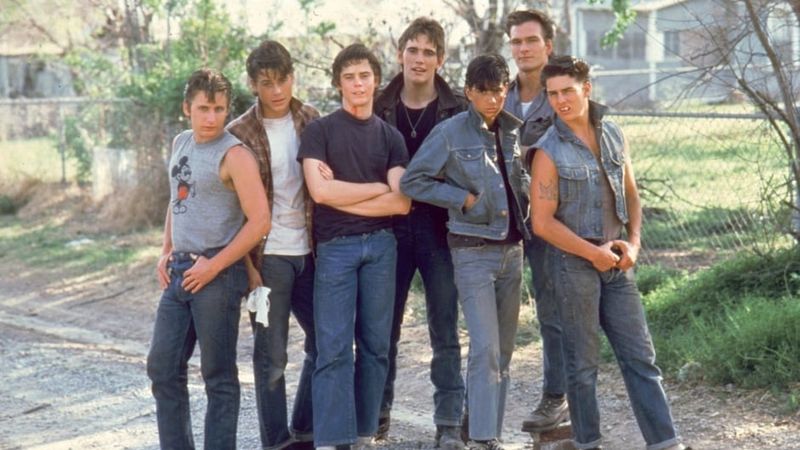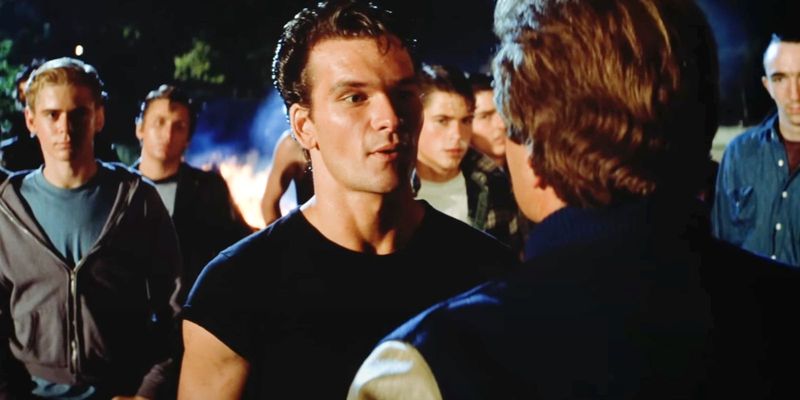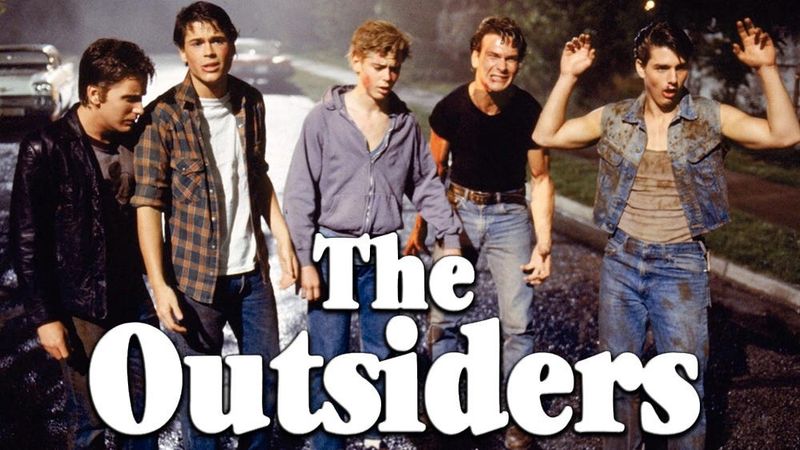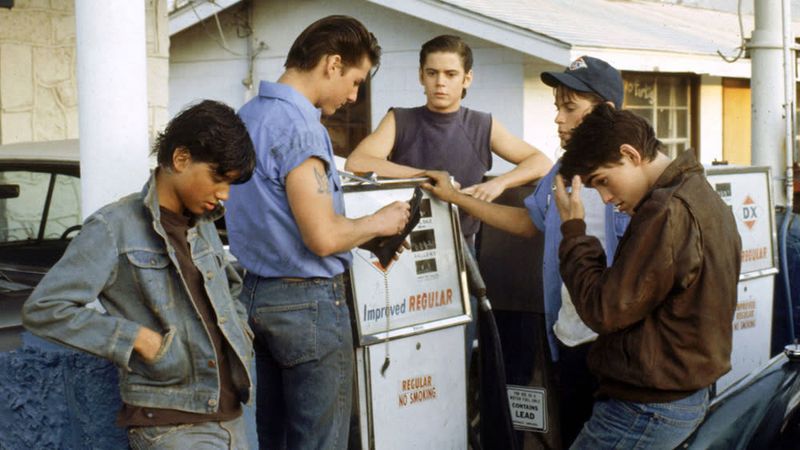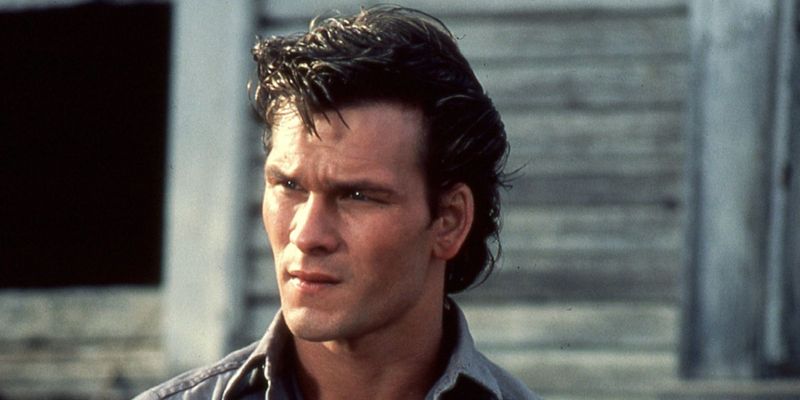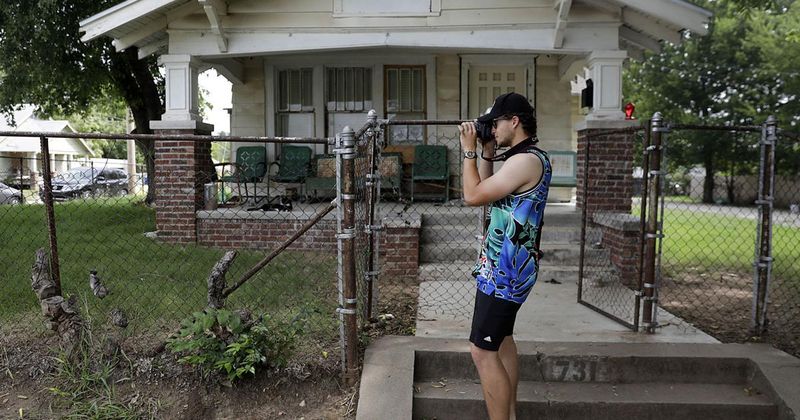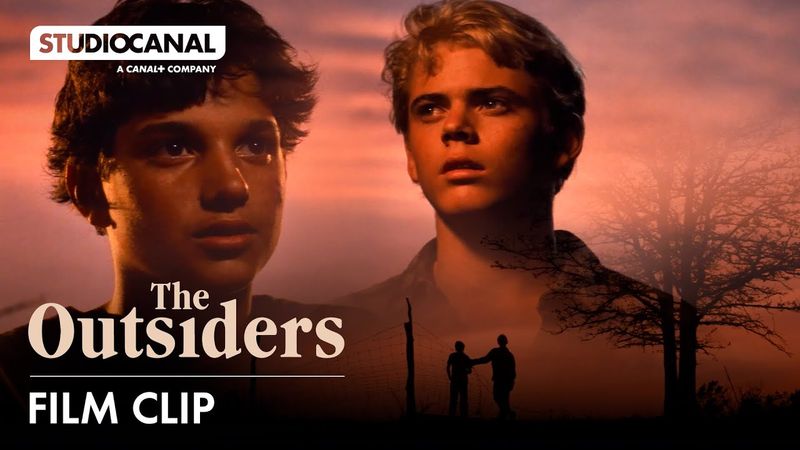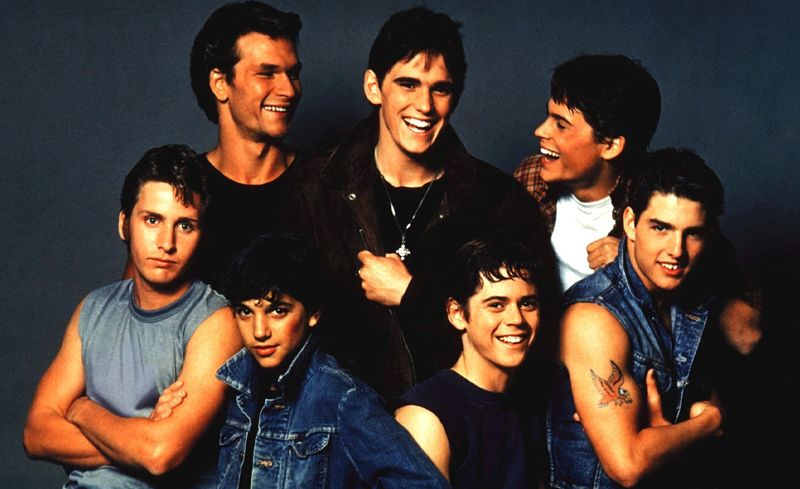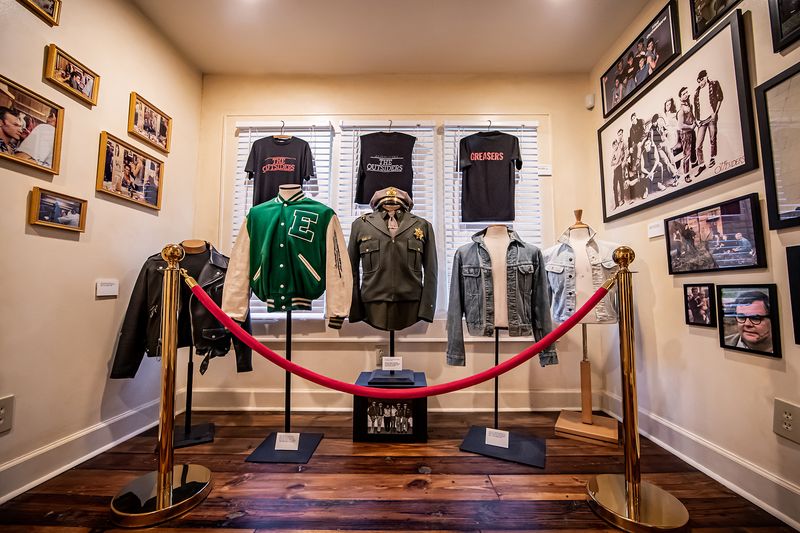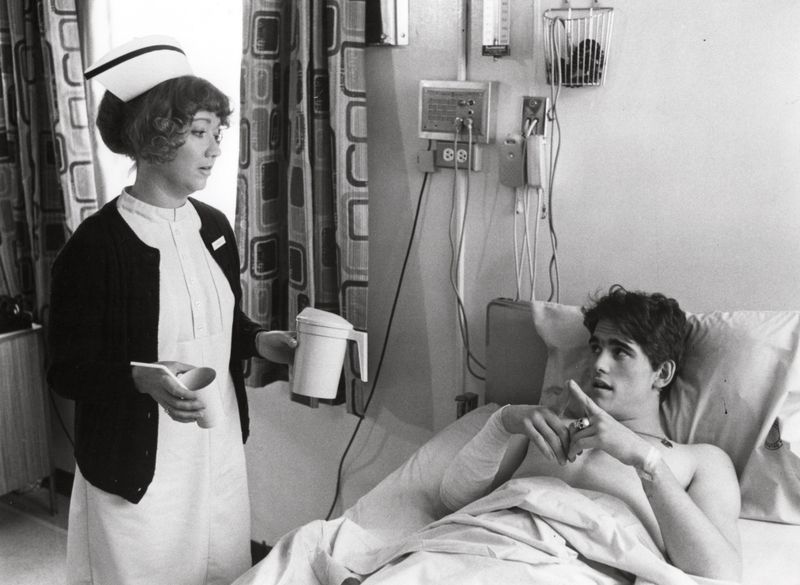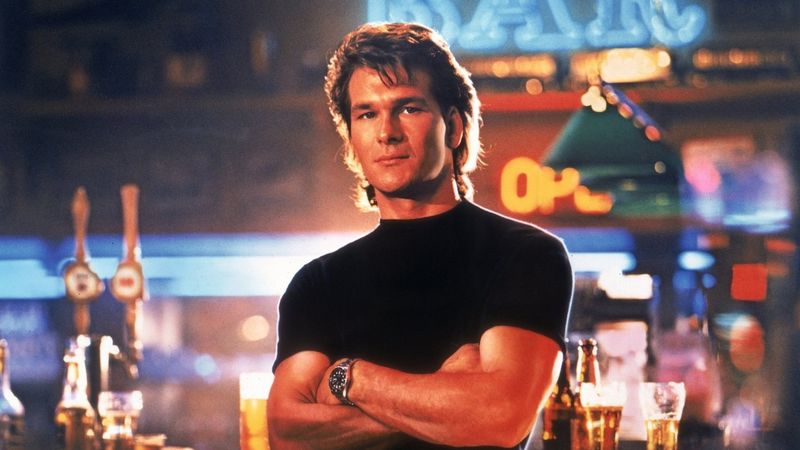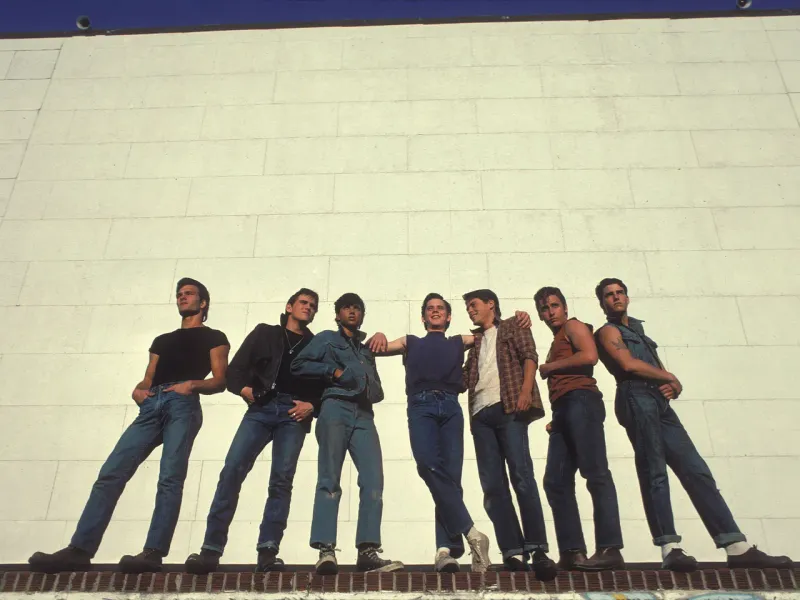“The Outsiders” remains a poignant piece of cinematic history, transcending its initial reception to become a beloved classic. Directed by Francis Ford Coppola and based on S.E. Hinton’s novel, the film introduced audiences to a host of young actors who would later become Hollywood icons. Behind the scenes, the production was rife with drama, dedication, and unforgettable moments that contributed to its legendary status.
1. Francis Ford Coppola Handpicked the Cast from a Teen Magazine Campaign
In a unique casting approach, Francis Ford Coppola turned to a teen magazine to assemble his cast for “The Outsiders.” Schoolchildren, passionate about S.E. Hinton’s book, campaigned for a film adaptation through letter-writing and a magazine contest. Coppola noticed their efforts and decided to bring the beloved characters to life. This unconventional method led to the discovery of future stars, shaping the film’s authenticity and charm. The decision to involve young fans in the process not only amplified anticipation but also ensured a connection between the audience and the film’s youthful spirit.
2. The Cast Was an A-List Who’s Who — Before They Were Famous
Before achieving stardom, a group of then-unknown actors came together to form the cast of “The Outsiders.” Among them were Tom Cruise, Patrick Swayze, Rob Lowe, Matt Dillon, Emilio Estevez, and Ralph Macchio. These young talents, on the brink of fame, brought their characters to life with intensity and authenticity. The film became a launching pad for their careers, making them household names. Their subsequent success in Hollywood was a testament to the foresight of Coppola’s casting choices, forever linking them to the film’s enduring legacy in popular culture.
3. Tom Cruise Pulled Out a Tooth for Authenticity
Demonstrating remarkable commitment to his craft, Tom Cruise went to great lengths to portray Steve Randle authentically. In a move that surprised many, Cruise had a cap removed from a front tooth to enhance his character’s rough appearance. This dedication to realism set a high standard on set and showcased his willingness to embrace the role fully. Such efforts contributed to the gritty, believable atmosphere of the film. Cruise’s insistence on physical authenticity became a defining trait of his early career, foreshadowing his future as one of Hollywood’s most committed actors.
4. Patrick Swayze Took His Role Very Seriously
Patrick Swayze immersed himself entirely in the role of Darrel Curtis, the tough, protective older brother. Even off-camera, Swayze maintained his character’s persona, creating a palpable sense of realism. His intense focus and commitment influenced the entire cast, elevating the film’s emotional depth. Swayze’s method approach helped solidify the sibling dynamics central to the story. This dedication exemplified his deep connection to the project, leaving a lasting impact on the film and his co-stars. The experience further cemented Swayze’s reputation as a versatile and committed actor in Hollywood.
5. Rob Lowe’s Audition Was Nearly a Disaster
Rob Lowe’s path to securing his role as Sodapop Curtis was fraught with tension. During his audition, nerves got the better of him, causing him to pass out. Despite this setback, Francis Ford Coppola saw potential in the young actor and cast him anyway. Lowe’s vulnerability and determination to overcome the audition mishap contributed to his believable portrayal of Sodapop. This early career challenge highlighted Lowe’s perseverance and set the stage for his subsequent success in Hollywood. His story is a testament to the power of resilience and the belief in one’s abilities.
6. Matt Dillon Had to Be Convinced to Take the Role
Initially hesitant to join “The Outsiders,” Matt Dillon needed persuasion to accept the role of Dallas Winston. Having already starred in another S.E. Hinton adaptation, “Tex,” Dillon was unsure about taking on another similar project. However, Francis Ford Coppola convinced him that Dallas’s character would be pivotal to the film’s narrative. Dillon’s portrayal of the rebellious and troubled Dallas became a defining moment in his career. His eventual decision to join the cast enriched the film’s dynamic, adding depth and complexity to the ensemble. This role further established Dillon as a talented actor in Hollywood.
7. Ralph Macchio Slept in His Clothes to Look the Part
Ralph Macchio’s dedication to authenticity in his portrayal of Johnny Cade was evident in his unique preparation methods. To capture Johnny’s worn-down and gritty look, Macchio slept in his costume for several days. This commitment to character detail enhanced the realism of his performance, making Johnny’s struggles and resilience palpable. Such immersive techniques underscored Macchio’s ability to connect deeply with his characters. His nuanced portrayal contributed significantly to the emotional weight of the film, helping audiences empathize with Johnny’s plight. Macchio’s efforts were instrumental in bringing depth to the story.
8. The Film Was Shot in Sequence
One of the film’s unique production choices was shooting mostly in chronological order. This decision, rare in Hollywood, was made to help the young cast stay emotionally connected to the story’s progression. By experiencing the narrative as their characters would, the actors delivered authentic and evolving performances. This approach fostered a deeper understanding of their roles and created a cohesive storytelling experience. The decision to shoot in sequence allowed for organic character development, enhancing the film’s emotional impact. Francis Ford Coppola’s innovative direction ensured that each scene resonated with genuine emotion.
9. The Cast Was Split Into “Greasers” and “Socs” Even Off-Camera
To cultivate genuine tension between the rival groups, Francis Ford Coppola devised a strategy to keep the cast divided. Actors playing the “Greasers” and “Socs” were separated even off-camera, with distinct treatment reflecting their characters’ social dynamics. The Socs dined luxuriously and received extensive direction, while the Greasers were isolated and given minimal guidance. This method heightened the authenticity of their interactions and reinforced their roles within the story. By mirroring the characters’ societal divide in real life, Coppola created an environment ripe for genuine conflict and camaraderie on screen.
10. There Were Real Fights During Filming
The line between fiction and reality blurred as real-life skirmishes erupted on set. Encouraged by Francis Ford Coppola’s immersive tactics, actors portraying “Greasers” and “Socs” often engaged in actual fights during filming. This raw energy translated into authentic on-screen tension, adding depth to the story’s central conflict. Such immersive methods, though risky, paid off by enhancing the film’s gritty realism. The actors’ commitment to their roles and willingness to engage physically contributed to the film’s lasting impact. These intense interactions further solidified the film’s reputation for authenticity and emotional resonance.
11. The Movie Was Critically Mixed Upon Release
Upon its initial release, “The Outsiders” faced a mixed critical reception. While some praised its stylistic direction and emotional depth, others criticized its heavy-handedness. The film’s unique approach divided opinions, with Francis Ford Coppola’s stylized choices proving polarizing. Despite the lukewarm reviews, the film resonated with audiences, becoming a cult classic over time. Its impact on popular culture and its role in launching the careers of its young cast contributed to its enduring legacy. The film’s reception highlights the sometimes unpredictable nature of critical assessments versus audience appreciation.
12. A Shorter Theatrical Cut Angered Fans
The original theatrical release of “The Outsiders” was met with disappointment from fans due to the omission of key scenes from the book. This shorter cut left audiences feeling that significant narrative elements were missing. The backlash prompted Francis Ford Coppola to revisit the film, ultimately leading to the release of “The Complete Novel” version in 2005. This extended edition restored the missing scenes, providing a more faithful adaptation of S.E. Hinton’s work. The fan-driven campaign for a complete version underscores the deep connection audiences felt to the story and its characters.
13. Patrick Swayze Was Injured During Filming
The dedication to realism sometimes came at a physical cost during the making of “The Outsiders.” Patrick Swayze sustained a head injury while filming a particularly intense fight scene. This incident, while adding authenticity to the scene, underscored the physical demands placed on the actors. Swayze’s commitment to bringing his character to life, even at personal risk, exemplified the cast’s willingness to go above and beyond. Such incidents highlighted the gritty nature of the project and the lengths to which the actors prepared to achieve realism. Swayze’s injury became part of the film’s storied production history.
14. The Film Used a Real Working-Class Tulsa Neighborhood
To capture the authentic atmosphere of S.E. Hinton’s novel, filming took place in real working-class neighborhoods in Tulsa, Oklahoma. This decision lent the film a tangible sense of place, aligning closely with the book’s setting. By using real locations, the production achieved a gritty realism that studio backdrops couldn’t replicate. The choice to film in Tulsa also honored the novel’s roots, providing a backdrop that was both familiar and true to the story. This attention to detail added depth to the narrative and enriched the film’s visual and emotional appeal.
15. The Iconic Trailer Used Stevie Wonder’s “Stay Gold”
The trailer for “The Outsiders” became memorable, in part due to its poignant soundtrack. Stevie Wonder’s “Stay Gold,” written specifically for the film, played a crucial role in setting the emotional tone. The bittersweet ballad enhanced the trailer’s impact, resonating with audiences and echoing the film’s themes of youth and impermanence. The song’s inclusion added a layer of nostalgia and sentimentality that complemented the visual elements. This collaboration between film and music underscored the power of a well-chosen soundtrack in amplifying a story’s emotional resonance, contributing to the trailer’s lasting legacy.
16. The Cast Members Remain Close to This Day
The bonds formed during the making of “The Outsiders” have persevered over the years. Many cast members remain close, often reuniting to reminisce about their shared experiences. Their enduring friendships are a testament to the strong connections forged during filming. Interviews and documentaries frequently highlight these relationships, underscoring the film’s profound impact on their lives. The camaraderie and support among the cast have become an integral part of the film’s legacy. These lasting friendships reflect the depth of their collaboration and the powerful memories created on set, contributing to the film’s enduring appeal.
17. A Museum Is Now Dedicated to the Movie
In tribute to the film’s enduring legacy, The Outsiders House Museum opened in Tulsa, Oklahoma. Curated by rapper Danny Boy O’Connor, the museum features an array of props, costumes, and memorabilia from the movie. This homage to the film provides fans a tangible connection to its history and impact. Visitors can explore the exhibits and immerse themselves in the world of “The Outsiders.” The museum’s creation celebrates the film’s cultural significance and the lasting impression it has made on audiences. It stands as a testament to the power of storytelling and the film’s timeless appeal.
18. S.E. Hinton Had a Cameo in the Film
S.E. Hinton, the author of “The Outsiders,” made a brief cameo appearance in the film. She can be seen as a nurse in the hospital scene with Dally and Johnny, adding a personal touch to the adaptation. Hinton’s involvement in the film extended beyond her appearance, as she worked closely with the production to ensure a faithful portrayal of her novel. Her cameo was a nod to the book’s origins and a way to connect with the audience. This inclusion underscored the collaboration between author and filmmakers, enriching the film’s authenticity and narrative depth.
19. Two Cast Members Died Young
The legacy of “The Outsiders” is tinged with tragedy, as two cast members, Patrick Swayze and Darren Dalton, passed away relatively young. Swayze, known for his dynamic roles and charisma, succumbed to pancreatic cancer, while Dalton’s life was cut short under different circumstances. Their untimely deaths added a poignant layer to the film’s history, reminding audiences of the fleeting nature of life. The loss of these talented actors resonates deeply with fans and those who knew them. Their contributions to the film remain cherished, and their memory continues to be honored by friends and fans alike.
20. The Trailer Is Still Used in Film Schools
The trailer for “The Outsiders” has transcended its original purpose, finding a place in film school curriculums as an exemplary study of cinematic marketing. Its effective use of tone, music, and pacing makes it a staple in media studies. Students analyze how the trailer encapsulates the film’s themes and character dynamics, making it an educational tool for budding filmmakers. The enduring appeal of the trailer highlights the art of storytelling within promotional materials. Its inclusion in academic settings serves as a testament to its craftsmanship and the lasting impact of “The Outsiders” in film history.
